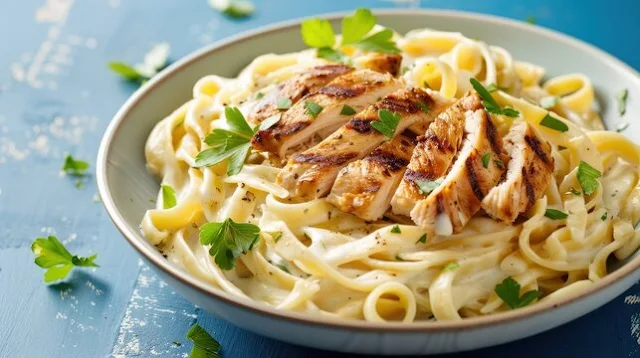Pigs in a Blanket Recipe: A Fun and Crowd-Pleasing Snack
Pigs in a blanket are one of the most loved finger foods, perfect for any occasion, from game-day parties and potlucks to family dinners and festive gatherings. These little bites of joy consist of savory sausages or hot dogs wrapped in a soft, buttery dough, baked to golden perfection. Their simplicity and versatility make them an instant hit with kids and adults alike.
In this step-by-step guide, we’ll walk you through how to make the ultimate pigs in a blanket. Whether you’re looking for a classic version or fun twists, this recipe has got you covered.
Ingredients for Pigs in a Blanket
Classic Ingredients:
- 1 package (8 oz) refrigerated crescent roll dough or puff pastry
- 1 package (12-16) cocktail sausages or hot dogs (cut into thirds)
- 1 large egg (for egg wash)
- 1 tablespoon water
Optional Toppings and Dips:
- Sesame seeds, poppy seeds, or grated Parmesan cheese (for topping)
- Mustard, ketchup, or ranch dressing (for dipping)
Step-by-Step Instructions
Step 1: Prepare the Dough
- Preheat your oven to 375°F (190°C) and line a baking sheet with parchment paper or lightly grease it.
- If using crescent roll dough, unroll it onto a clean surface. Separate the triangles along the perforations.
- If using puff pastry, roll it out on a floured surface to about ¼-inch thickness and cut it into small rectangles (approximately 2 inches wide by 4 inches long).
Step 2: Assemble the Pigs in a Blanket
- Place a sausage or hot dog piece at the wide end of a triangle (or one end of a rectangle).
- Roll the dough around the sausage, ensuring the seam side is down to prevent unrolling during baking.
- Repeat the process with all the sausages and dough pieces.
Step 3: Brush with Egg Wash
- In a small bowl, whisk together the egg and 1 tablespoon of water to create an egg wash.
- Lightly brush the egg wash over the tops of the wrapped sausages. This will give the dough a golden, shiny finish.
- Sprinkle optional toppings like sesame seeds, poppy seeds, or Parmesan cheese over the dough for added flavor and texture.
Step 4: Bake the Pigs in a Blanket
- Place the prepared pigs in a blanket on the lined baking sheet, leaving a bit of space between each one to allow for even baking.
- Bake in the preheated oven for 12-15 minutes, or until the dough is puffed and golden brown.
- Remove from the oven and let cool slightly before serving.
Tips for Perfect Pigs in a Blanket
- Choose the Right Sausages: Cocktail sausages or mini smoked sausages are ideal. For a heartier version, use full-size hot dogs cut into smaller pieces.
- Customize the Dough: Crescent rolls are a popular choice, but puff pastry offers a flakier, more indulgent option. Homemade biscuit dough can also be used for a unique twist.
- Make Them Cheesy: Place a small slice of cheese on the dough before wrapping it around the sausage for a gooey, cheesy surprise.
- Add Flavor: Sprinkle garlic powder, onion powder, or Italian seasoning onto the dough before rolling for an extra burst of flavor.
- Don’t Overbake: Keep an eye on them while baking. The dough should be golden brown and puffed but not overly dark.
Variations
- Breakfast Pigs in a Blanket: Use breakfast sausages and wrap them in pancake batter or biscuit dough. Serve with maple syrup for dipping.
- Vegetarian Option: Use vegetarian or plant-based sausages for a meat-free version.
- Spicy Twist: Use spicy sausages or sprinkle red pepper flakes on the dough for a kick of heat.
- Sweet and Savory: Brush the dough with honey or maple syrup before baking for a sweet glaze that pairs beautifully with salty sausages.
- Mini Pizzas: Add a dollop of marinara sauce and shredded mozzarella to the dough before rolling for a pizza-inspired variation.
Dipping Sauces
The right dipping sauce can elevate pigs in a blanket from great to unforgettable. Here are some ideas:
- Classic yellow mustard or Dijon mustard
- Ketchup or barbecue sauce
- Honey mustard
- Cheese sauce
- Spicy sriracha mayo
- Ranch dressing
Nutritional Information (Per Serving)
- Calories: ~200 (for 2 pieces, depending on sausage and dough used)
- Protein: 5g
- Carbohydrates: 10g
- Fat: 15g
- Sodium: 400mg
Make-Ahead and Storage
- Prepare Ahead: Assemble the pigs in a blanket, place them on a baking sheet, and refrigerate for up to 24 hours before baking.
- Freeze for Later: Arrange unbaked pigs in a blanket on a tray and freeze. Once frozen, transfer to a freezer bag. Bake directly from frozen, adding 2-3 minutes to the baking time.
- Store Leftovers: Keep leftovers in an airtight container in the refrigerator for up to 3 days. Reheat in the oven or air fryer for the best texture.
Why Pigs in a Blanket Are So Popular
Pigs in a blanket are more than just a snack—they’re a nostalgic treat that brings people together. Their bite-sized convenience makes them perfect for any event, and their versatility allows for endless customization. Whether you’re serving them at a party or enjoying them as a casual snack, pigs in a blanket are guaranteed to please.
Conclusion
Pigs in a blanket are a timeless appetizer that’s easy to make, fun to eat, and endlessly adaptable. With their golden, buttery exterior and savory filling, they’re the perfect addition to your recipe repertoire. Follow this guide to create the ultimate pigs in a blanket, and watch them disappear from the plate in no time.
Serve them warm, pair them with your favorite dips, and enjoy the joy they bring to every occasion!


































